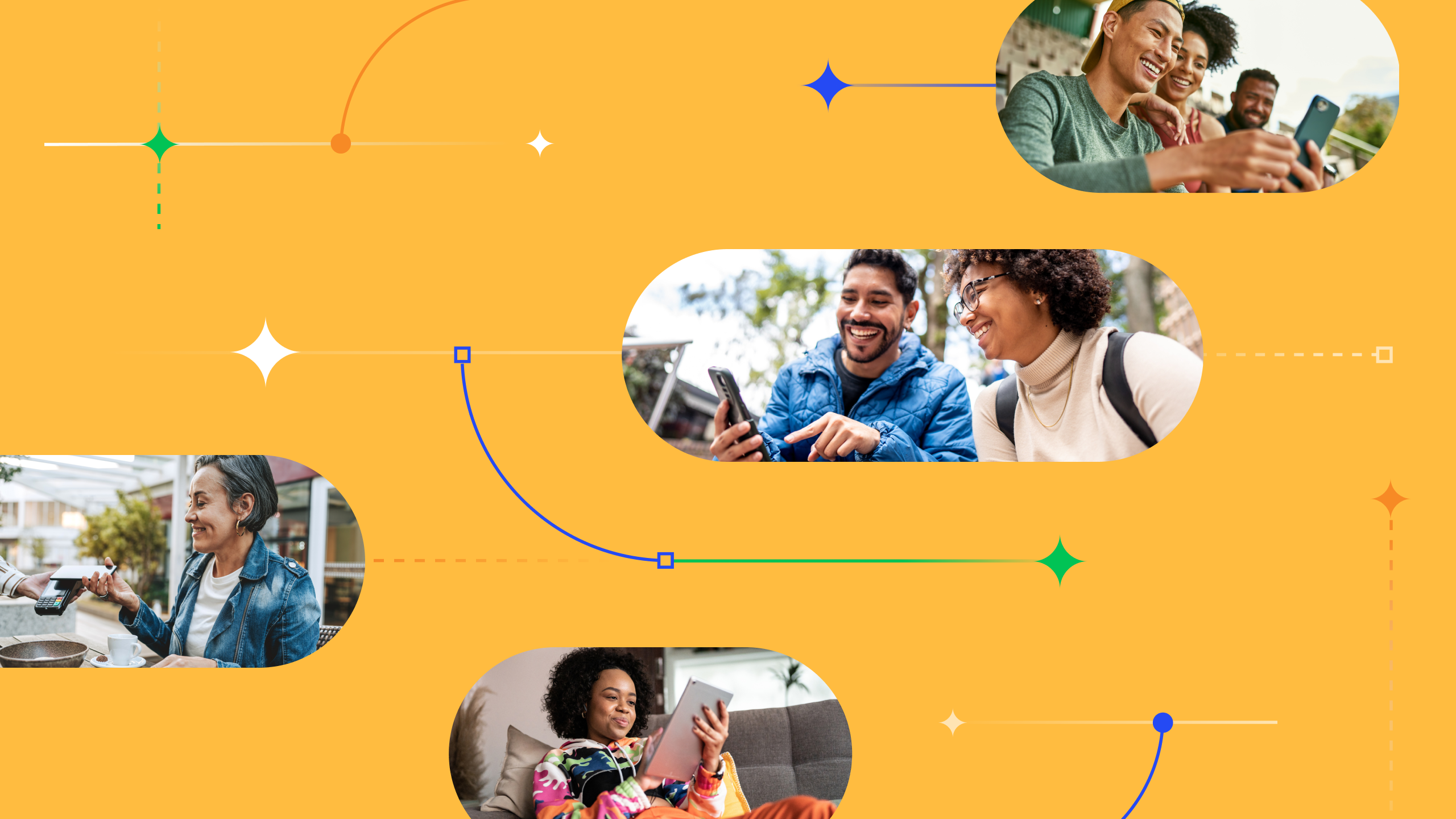The case studies of the future will look back at the pandemic as a time when businesses were forced to adapt to customer needs more swiftly than ever before, and no industry has demonstrated this more nimbly than retail. As shoppers moved online, retailers quickly found ways to give customers a more personalized experience that forged and maintained connections in a socially distanced world.
As a leader in identity marketing, we’ve been particularly inspired by the way retail brands have thrived during the pandemic by using gated, personalized offers to engage groups like students, teachers, military members, and healthcare workers. These campaigns have been highly successful because they reward meaningful aspects of a consumer’s identity, like their life stage, career, or affiliation.
At the start of this year, we launched a portfolio of products and services designed to help the financial services industry acquire new customers with less risk, while complying with necessary regulations. Our work with financial marketers showed us they could apply retail strategies and see the same success.
We partnered with Sanjib Kalita, the CEO of Guppy and the editor in chief of Money20/20, to share these strategies in a recent webinar. Here are the highlights.
7 Tips Financial Marketers Can Take from Retailers
1. Personalize Small Moments
Financial services often engage with customers at big moments in their lives, such as financing a new home, but they also have billions of everyday customer interactions—in the bank and online—that provide opportunities to engage with customers more deeply and win their loyalty. Retailers are already doing this well.
Take Lowe’s for example. The company gives military members an exclusive discount, but it also provides that community with special perks, like preferred parking spots for veterans and seasonal gifts, such as a free bag of charcoal in the summer. This combination of personalized experiences has driven 3x engagement and brought in millions of new veteran customers for Lowe’s.
Make it Work
Financial services can adapt this strategy very well. In fact, many banks already have special customer service lines and even support for VIP customers.
There are many other small moments you can personalize, like when customers log in to their online bank account, call customer service, or walk into your local branch. Adding personal elements to these exchanges can endear customers to your company without costing a great deal of money. They work because they make customers feel recognized and valued.
And even more important than the perk or service itself is making sure the messaging expresses true regard and appreciation for the customer. A great example of this is Tuft & Needle. The company donated mattresses to local firehouses with a clear message: we appreciate your service and want you to have a good night’s sleep.

2. Align Corporate Campaigns with Your Customers’ Values
Retailers know that consumers want to feel connected to a brand and its values, and that they want to patronize brands that are positively impacting the world.
This is particularly important for millennials and Gen Zers who are just entering the financial system. These consumers know the power of their spend, and a number of successful retailers have made their corporate values central to their messaging.
The North Face regularly promotes environmental preservation and uses its platform to encourage customers to vote. Ben & Jerry’s has made social change a regular theme in their brand communications, so it was natural for them to support Colin Kaepernick and his stance for racial justice.
Make it Work
Environmental, social, and governance (ESG) criteria is already a hot topic in financial services. Just as socially conscious shoppers seek out brands that reflect their values, socially conscious investors use ESG as a way to screen potential investments and evaluate how banks invest their money. ESG efforts that most effectively attract loyal customers are the ones whose messages are authentic, believable, and impactful.
3. Capture Digitally-Averse Customers
The pandemic forced digitally averse consumers to reconsider their habits, and retailers responded by making it easy for in-person shoppers to become digital customers. For example, Instacart’s messaging made a point of connecting older customers to its service by encouraging stay-at-home policies and tying it to the ease of same-day delivery.
Costco turned their exclusive members-only discounts into a robust digital catalogue with well-timed specials. It also gave online shoppers a more store-like experience with better opportunities to browse and discover new items. As customers move online, sustaining engagement and building loyalty are key.
Make it Work
Banks can turn digital acquisition into a long-term loyalty play by creating experiences that make customers on file stickier. What would make your bank card not just attractive, but the one customers reach for first? Consider awarding points, offering more attractive terms, or providing longer return policies for retail partnerships.
4. Leverage “Buy Now, Pay Later”
The next retail trend is actually a financial trend as well. “Buy Now, Pay Later” has been a tremendously hot topic for both retail and financial services. And it has three elements that make it potentially more attractive than credit cards.
First, the payment structure is very simple. One great retail example is the highly popular Peloton exercise bike. The offer is straightforward: you can buy a Peloton for $157/month for 12 months. There are no questions of APR, fees, or other hidden complications that can cause buyers to hesitate.
Second, by using non-traditional data that pay-over-time companies like Affirm and Klarna do, retailers are able to extend their offers to more customers.
Third, because it’s designed specifically for these retail experiences, Buy Now, Pay Later is seamless and easy.
Make it Work
The “Buy Now, Pay Later” approach can be a great source of inspiration for financial marketers. The goal is find ways to make customer interactions and transactions faster, easier, and more accessible. By thinking outside the box and offering customers more value in ways they can afford, you can streamline processes and acquire new customers and engage existing customers.

5. Combine Physical and Digital Store Experiences
With the number of digital shoppers growing, brick-and-mortar retailers needed to remain relevant. Target and Petco offer great examples of combining digital and in-store experiences with a buy online, pick up in store approach. They made creating a digital account simple, offered discounts and easy options to reorder, and provided a safe way for customers to shop online and pick up at their local store. Customers signed up digitally because they needed to, but shopped again because they wanted to.
Make it Work
Banks can take the same approach with their brick-and-mortar branches by minimizing the steps a customer needs to take while inside the branch, focusing on getting the customer in and out as quickly as possible, and pre-loading experiences onto digital platforms.
Banks often think of digital experiences as a way to service physical customers, but retailers are doing the opposite: serving digital customers with the brand’s physical locations. Enterprising banks that adopt this approach can pioneer new ways of doing business in a digital-first world—a marketplace dominated by the digital-first millennial and Gen Z financial consumers.
6. Add Incremental Value During the Customer Lifecycle
Thanks to Netflix and Amazon, customers expect a personalized experience. Stitch Fix and Spotify are two brands that create these experiences ongoingly by leveraging customer data and insights. Stitch Fix offers smart suggestions based on customers’ previous shopping habits, and Spotify’s “Uniquely Yours” curates personalized audio content based on what the customer has been listening to.
Make it Work
Financial services can adopt a similar approach, providing personalized messages and product recommendations based on a customer’s life stage, such as college students or recent graduates who are looking for a job, buying a car, filing their first tax return, or getting their first unsecured credit card.
You can also provide related services, like Sallie Mae giving freshmen with loans one year of tutoring, or offering students help with their resumes. Providing experiences that offer non-financial value can cement loyalty at a time when students are forming their brand alliances, which drives long-term financial returns once graduates start their careers, buy homes, and begin raising families.

7. Support Touchless Technology
Touchless payments swept the marketplace, and big retail brands like Walmart and Target have used it to make checkout safer and easier than ever for customers who prefer to shop in store. As people become accustomed to touchless at retailers and restaurants, they will increasingly expect it everywhere. Walking into a bank branch and being asked to handle a pen or sign on a touchscreen can feel hazardous and will soon seem outdated.
Make it Work
Financial services can provide in-person customers with safer, easier options, like touchless identification systems to access their account information and sign in digitally. Banks that get creative with how to provide customer service that is safe and convenient will thrive.
As retailers continue to up their game in customer experience, the consumers’ basic expectations will also rise. It’s time for financial marketers to look for ways to offer more personalized, convenient, and easy customer experiences—in the bank and online—that will help acquire, engage and retain loyal customers for years to come.


